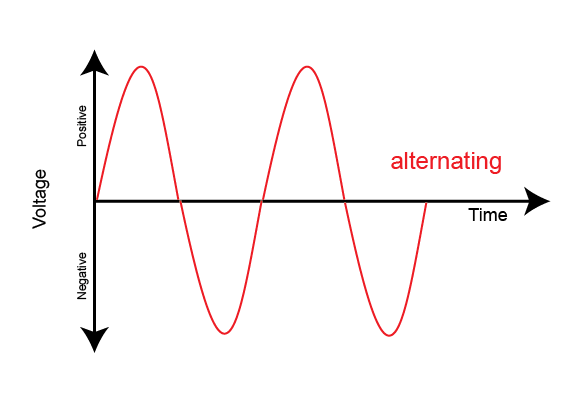What is the full form of AC?
AC: Alternating Current
AC stands for Alternating Current. It refers to a current in which movement of electric charge changes direction periodically. In other words, alternating current changes its direction and magnitude periodically, i.e., it starts from 0 grows to maximum, returns to 0 and again grows to the maximum in the opposite direction and then again reaches to original value 0.

This cycle is repeated continuously as long as the AC is flowing in the circuit. Alternating Current is different from direct current (DC) as DC flows only in one direction. The generation and transmission of AC are very easy as compared to DC. So, it is the AC that is used in mains-wired buildings such as homes, offices, factories and other buildings.
AC is also used in electric motors that convert electric energy into mechanical energy. Electric motors are present in various electrical appliances like washing machines, refrigerators, etc.
Alternating Current Production:
AC can be generated by using devices that are known as alternators. However, there are also different methods to generate AC by using various circuits. Besides this, one of the easiest ways to produce AC is by using a single coil AC generator that comprises two-pole magnets and a single loop of rectangle-shaped wire. In this method, AC is produced based on Faraday’s principle of electromagnetic induction in which mechanical energy is converted into electrical energy.
Advantages of Alternating Current I Advantages of AC over DC
- AC can be transmitted over long distances using step up transformers but DC cannot be transmitted like this.
- It is cheap and easy to generate and transmit AC than DC.
- The efficiency of the AC generator is higher than DC.
- The loss of power while transmitting AC is very less.
- AC can be converted into DC.
- The magnitude of AC can be decreased without losing much energy.
- Brushes are required in DC motors to make electrical contact with moving coils of wire whereas AC motors do not need it.
- AC causes less disturbance in the nearby communication wires such as telephone lines.
- It is suitable for domestic and industrial applications.
- Besides this, in the AC machine and transformer, the loss of iron and copper is low as alternating current improves the efficiency of AC machines.
